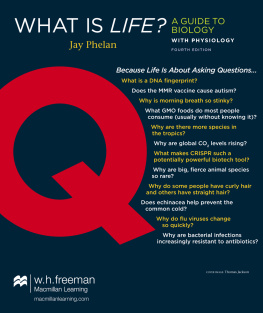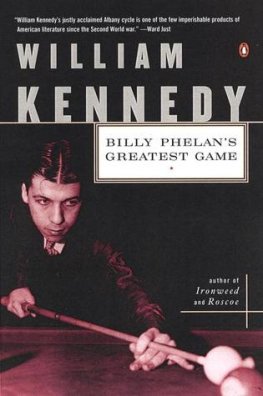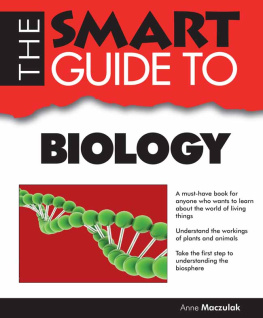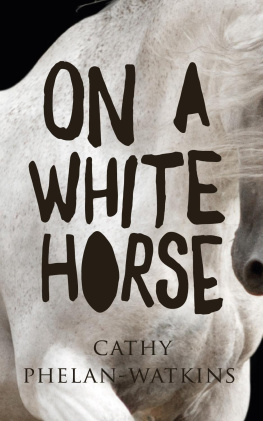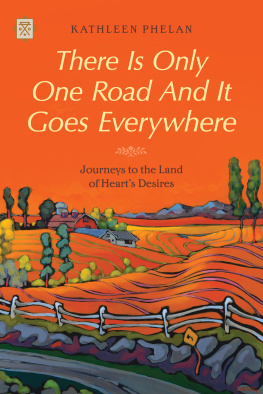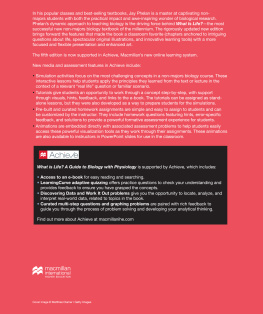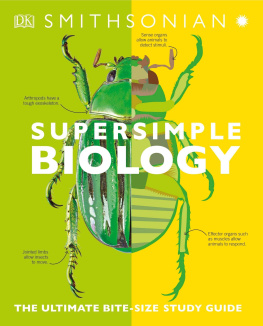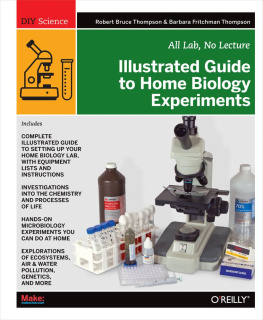Jay Phelan - What is life?: a guide to biology
Here you can read online Jay Phelan - What is life?: a guide to biology full text of the book (entire story) in english for free. Download pdf and epub, get meaning, cover and reviews about this ebook. City: New York, year: 2018, publisher: W.H. Freeman, genre: Children. Description of the work, (preface) as well as reviews are available. Best literature library LitArk.com created for fans of good reading and offers a wide selection of genres:
Romance novel
Science fiction
Adventure
Detective
Science
History
Home and family
Prose
Art
Politics
Computer
Non-fiction
Religion
Business
Children
Humor
Choose a favorite category and find really read worthwhile books. Enjoy immersion in the world of imagination, feel the emotions of the characters or learn something new for yourself, make an fascinating discovery.
- Book:What is life?: a guide to biology
- Author:
- Publisher:W.H. Freeman
- Genre:
- Year:2018
- City:New York
- Rating:3 / 5
- Favourites:Add to favourites
- Your mark:
- 60
- 1
- 2
- 3
- 4
- 5
What is life?: a guide to biology: summary, description and annotation
We offer to read an annotation, description, summary or preface (depends on what the author of the book "What is life?: a guide to biology" wrote himself). If you haven't found the necessary information about the book — write in the comments, we will try to find it.
Jay Phelan: author's other books
Who wrote What is life?: a guide to biology? Find out the surname, the name of the author of the book and a list of all author's works by series.
What is life?: a guide to biology — read online for free the complete book (whole text) full work
Below is the text of the book, divided by pages. System saving the place of the last page read, allows you to conveniently read the book "What is life?: a guide to biology" online for free, without having to search again every time where you left off. Put a bookmark, and you can go to the page where you finished reading at any time.
Font size:
Interval:
Bookmark:
The green portion represents the proportion of all papers published in the journal Behavioral Ecology that had a female first author. The gray portion represents the proportion of all papers published in Behavioral Ecology that had a male first author. Together, the green and gray portions, making up the whole pie, represent all papers published in Behavioral Ecology (that is, 100%).
The pie chart on the left shows the proportion of all papers published in Behavioral Ecology that had a female first author (and, in gray, the proportion with a male first author) during the years 19972001, when the journal had a single-blind review process in which reviewers knew authors identities (and, presumably, their sex). The pie chart on the right presents the same information, but for the years 20022005, when the journal had a double-blind review policy in which reviewers did not know authors identities or sex.
When the journal changed its review policy so that reviewers did not know the sex of authors, the proportion of accepted papers that had female first authors increased from 23.7% to 31.6%. This suggests that when reviewers did know the sex of authors, they were less likely to accept a paper with a female first author. This would seem to indicate that the reviewers for Behavioral Ecology at that time were biased against female authors.
It could be that, beginning in 2002, there was an increase in the proportion of submitted papers that had a female first author. This explanation seems unlikely, however, given the information in the text that a similar journal that did not change its review policy had no change in the proportion of published papers with a female first author. Another possible explanation is that the proportion of women in the field of behavioral ecology increased in the early 1990s, so that, during the second period measured, 20022005, there were more women at a more advanced stage in their careers, and the quality of the papers they submitted increased over time.
The increase in proportion of published papers with female first authors was 31.6% 23.7%, or 7.9 percentage points. It could also be described as a 7.9%/23.7% 100% = 33% increase (one-third of 23.7% added to 23.7% gives 31.6%).
The information in the figure tells us what percentage of the papers published had a female first author. We cannot tell from this information whether 50% of the papers submitted had female first authors. If that were true, it would be reasonable to be concerned that the proportion published wasnt also 50%. But, what if only 10% of behavioral ecologists are women? If that were the case, we might expect that only 10% of the papers published in the journal would have female first authors, and we might be concerned that with such a small proportion of female behavioral ecologists, more than one-quarter of the papers published in the journal had female first authors.
The graphs do not prove a general bias against female scientists. Because the data are drawn from just one journal in one field of science, we cannot be certain that they reflect a similar bias across all journals in biology, or in chemistry, physics, or other scientific fields. Nonetheless, the findings do suggest such a bias may exist. It would be valuable to collect additional data on this topic across all of the sciences.
Two claims were made, requiring two double-blind experiments, because only one variable can be changed or tested at a time. Experiment 1: Measure intestinal transit time (the time for consumed foods and other substances to travel through the digestive system) for two groups. Group 1 (control group) does not receive Activia yogurt and instead receives an inert yogurt substitute. Group 2 (experimental group) receives Activia yogurt. Intestinal transit times are measured for both groups. Neither the participants nor the administrators know which participants are consuming Activia and which are consuming the substitute. Data from group 2, the experimental group, are compared with data from group 1, the control group, to determine the effectiveness of Activia. If the data show that intestinal transit time is shorter in the experimental group, the statement by the Dannon Company is supported. Experiment 2: Determine whether DanActive dairy drink helps prevent colds and flu, again using two groups. Group 1 (control group) does not receive DanActive dairy drink and instead receives an inert dairy drink substitute. Group 2 (experimental group) receives DanActive dairy drink. The incidence of colds and flu is measured over a finite period of time, such as one year, for the two groupsthe same period of time for both groups. Neither the participants nor the administrators know which participants are consuming DanActive dairy drink and which are consuming the substitute. Data collected from the experimental group are compared with data from the control group. If the incidence of colds and/or flu is lower in the experimental group, the statement made by the Dannon Company is supported.
Biological literacy can be defined in several ways: (a) The ability to use the process of scientific inquiry to think creatively about real-world issues that have a biological component. Examples could include using the scientific method to answer questions about which plant fertilizers are more effective or to evaluate whether companies claims about herbal remedies are legitimate and supported by properly designed experiments. (b) The ability to communicate these thoughts to others. Examples could include discussing with a friend the importance of consuming adequate amounts of calcium or of making accurate tables and graphs for data collected in experiments. (c) The ability to integrate these ideas into decision making. Examples could include interpreting data from experiments and using this information to make decisions. For instance, you could read and evaluate an article about the benefits of eating a diet rich in fruits and vegetables for reducing certain cancers, then decide whether you and others would benefit from this.
Empirical refers to knowledge gathered through observations and experiments that are rational, testable, and repeatable. In contrast to this empirical approach, knowledge can also be gained through reason, reflection, and observation in the absence of experimentation.
Predictions are made based on a formulated hypothesis and are tested with experiments. If a hypothesis is not supported by the experimental results, it can be revised, new predictions made, and these predictions tested with new experiments. Experiments can be repeated many times by many different scientists, and the hypothesis can again be revised and tested if conflicting results arise. In this way, the scientific method, done properly, is self-correcting.
When a phenomenon can be measured, it can be tested through experimentation. To be testable by the scientific method, all examples would need to comply with this requirement. If a phenomenon cannot be measured, it cannot be tested using the scientific method; examples include determining the existence of God or the beauty of a Shakespeare sonnet.
The null hypothesis would state that exercise does not affect the amount of acne a person develops.
The prediction would be that a group of people who eat fresh fruits will have a lower rate of illness than another group of people who do not consume fresh fruits.
Font size:
Interval:
Bookmark:
Similar books «What is life?: a guide to biology»
Look at similar books to What is life?: a guide to biology. We have selected literature similar in name and meaning in the hope of providing readers with more options to find new, interesting, not yet read works.
Discussion, reviews of the book What is life?: a guide to biology and just readers' own opinions. Leave your comments, write what you think about the work, its meaning or the main characters. Specify what exactly you liked and what you didn't like, and why you think so.

